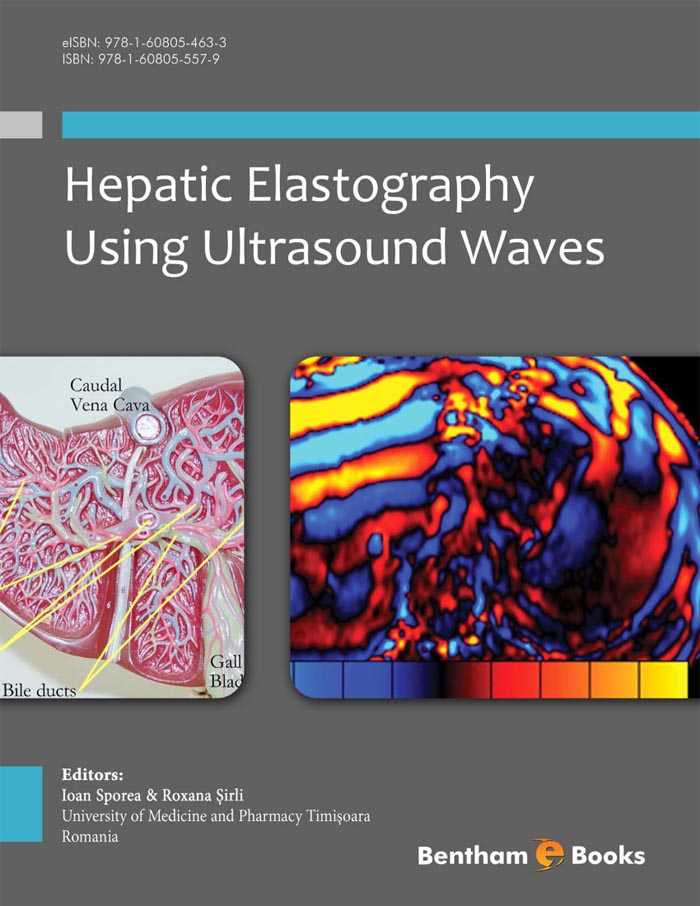Introduction
Some time ago, Schiano raised the question "To B or not to B", which means "To Biopsy or not to Biopsy" the liver for the evaluation of chronic hepatopathies. For a long period, liver biopsy (LB) was considered the "gold standard" for the evaluation of liver morphology. A major disadvantage of LB is its invasiveness: the risk of post-biopsy discomfort for patients and sometimes, for serious complications; also the lack of sensitivity to detect fibrosis, due to its heterogeneity; and the inability to obtain good quality fragments, adequate for pathological examination. In these conditions, the question is whether LB can be regarded as the "gold standard" for staging and grading chronic hepatitis in daily activity.
But what alternative can we propose for the evaluation of liver fibrosis at this moment? The answer is: non-invasive methods and the ultrasound elastographic ones presented in this volume.
Transient Elastography (FibroScan, Echosens) is a recognized method in many countries. Published papers and meta-analyses showed the value of this method for the diagnosis of liver cirrhosis (AUROC - 94%); for staging chronic HCV hepatitis (a cut-off value of 7.5 kPa differentiates F0–1 from F2–4 with 67% sensitivity, 87% specificity, 86% positive predictive value (PPV) and 68% negative predictive value (NPV), with a diagnostic accuracy of 76%; but also in HBV chronic infection, NASH, PBC, PBS).
Acoustic Radiation Force Impulse (ARFI) Elastography (Siemens S2000) is another elastographic methods with promising results (a meta-analysis showed that the mean diagnostic accuracy of ARFI expressed as AUROC was 0.88 for the diagnosis of significant fibrosis (F≥2), 0.91 for the diagnosis of severe fibrosis (F≥3), and 0.93 for the diagnosis of liver cirrhosis. In the subgroup of patients who underwent both ARFI and TE, the diagnostic accuracy of ARFI was comparable to TE for the diagnosis of significant and severe fibrosis, with a trend to be inferior for the diagnosis of cirrhosis. The future of liver fibrosis evaluation points towards non-invasive methods, decreasing dramatically the number of liver biopsies.
Studies have been published regarding the value of Real Time Elastography, performed for the first time with Hitachi systems (EUB-8500 and EUB-900), which uses an extended combined autocorrelation method to produce a real-time elasticity image by using a freehand approach to compress the tissues with the ultrasound transducer. The relative tissues’ elasticity is calculated and displayed as a color overlay on the conventional B-mode image. HiRT-E could be a promising method for the evaluation of liver fibrosis in chronic hepatopathies, but new methods of color code interpretation are needed to improve the accuracy, as well as a reference acquisition methodology.
ShearWave™ Elastography, the new "kid on the block", produces an image where true local tissue elasticity is displayed in a color map in "real time". Elasticity is displayed using a color coded image superimposed on a B-mode image. Stiffer tissues are coded in red and softer tissues in blue, with an image resolution of approximately 1mm. The true elasticity is assessed based on Shear wave propagation speed into the tissue. It is a very new method and only small studies were presented at international meetings.
Thus, having the alternative of noninvasive elastographic methods for the evaluation of liver fibrosis (maybe together with serum tests such as FibroMax) and knowing the low real life yield of liver biopsy (and the risk of complications), we can safely conclude that, for daily medical activity, liver biopsy can be avoided in the vast majority of cases.
This ebook presents an interesting set of chapters on the subject and is of good value to hepatologists interested in non invasive diagnostic methods for liver diseases.

